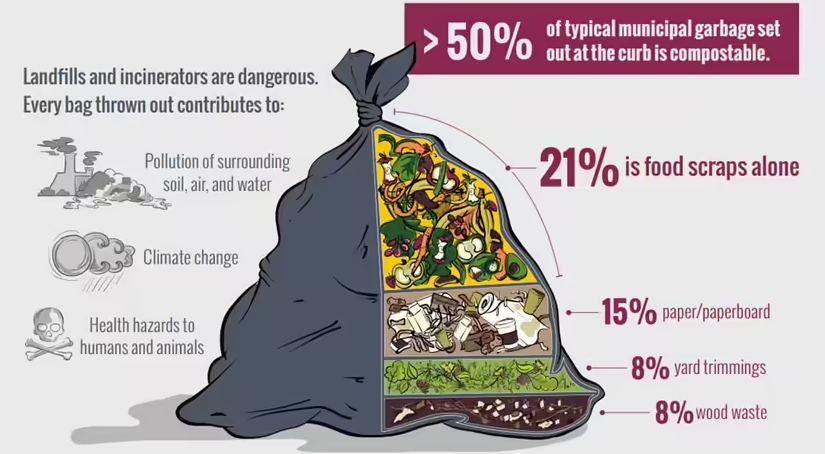Depleted soil lacks the nutrients, microorganisms, and other ingredients that plants need to grow. The causes of soil depletion are numerous and include over-cultivation, overgrazing, erosion, and the excessive use of petrochemical fertilizers. When depleted soil is low in organic matter, the soil has a hard, compacted texture that makes it difficult for plants to take root and absorb nutrients. Farmers lose crops, wildlife and insects lose habitat, and cows and other grazing animals lose valuable pasturage.
Fortunately, these sustainable agricultural practices can restore soil health.
- Resting and rotational grazing
- Crop rotation and cover crops
- Composting, mulching, and natural fertilizers
They can provide other environmental benefits.
Resting and Rotational Grazing
Resting the soil, or leaving it fallow, can restore nutrients through decomposition and nutrient cycling. When organic matter such as windblown leaves or the remnants of last year’s crops are allowed to decompose on the soil’s surface, microorganisms break them down and release nutrients such as nitrogen, phosphorus, and potassium back into the soil. Rainfall can then wash these nutrients down into the soil, where they can be taken up by plant roots. Resting may be insufficient for severely depleted soils, however, and “it can be difficult economically for farmers,” the American Society of Agronomy explains.
Rotational grazing is similar to leaving soil fallow for a period of time; however, this agricultural practice applies to pasturage instead of cultivated farmland. With rotational grazing, livestock is moved through a series of pasture subdivisions called paddocks. As the United States Department of Agriculture (USDA) explains, “This frequent movement allows plants to rest and regrow to grazing height while livestock grazes other paddocks.” The hooves of cows stimulate plant growth at the roots, but the cows don’t remain in the same place for such a long period of time that the landscape becomes denuded of grasses, which can cause soil erosion.
Crop Rotation and Cover Crops
Crop rotation rests the soil from the demands of a particular crop; however, the soil does not lie fallow. Instead, a complementary crop is planted. Ideally, this form of “green manure” adds nutrients back into the soil. For example, a farmer who plants corn, a nitrogen-depleting crop, may then plant peas or beans, crops that return nitrogen to the soil, the following season. Farmers may also alternate sod-based crops with row crops. As California State University Chico explains, “many farmers rotate several different crops in succession” to reduce soil depletion and maintain soil health.
Cover crops such as rye, alfalfa, common vetch, and hairy vetch aren’t planted for harvest. Instead, they’re used to cover otherwise fallow soil to prevent erosion, manage weeds and pests, and promote water retention. Sometimes, cover crops are used to protect other plants, such as how watermelon farmers plant rye as a windbreak. Native grasses are also planted in some places because these perennials build deeper, more expansive root systems. No matter why or which cover crops are used, they are “a long-term investment in improved soil health,” Sustainable Agriculture Research and Education (SARE) explains.
Composting, Mulching, and Fertilizing
Composting and mulching both involve the intentional application of organic materials to depleted soils. Sometimes the terms are used synonymously, but they are not identical. Compost is biologically-active material that breaks down from organic matter such as leaves, grass clippings, and food scraps. Mulch can also include organic materials such as wood chips or coconut shells but it can also include inorganic materials such as landscape fabric, gravel, pebbles, and river rock. Landscape geomembranes can also be used as mulch, but they may heat the soil excessively and prevent the passage of water.
Finally, restoring depleted soil may involve the use of chemical fertilizers such as ammonium sulfate or ammonium phosphate, or the use of organic fertilizers such as cow manure or chicken manure. However, the excessive use of any type of fertilizer alters the soil by creating too high a salt concentration, which can hurt beneficial soil microorganisms. In addition, as the University of California Agriculture and Natural Resources explains, “Overfertilization can lead to sudden plant growth with an insufficient root system to supply adequate water and nutrients to the plant”.
For healthier plants and healthier soil, proper fertilization and other sound agricultural practices are essential.


